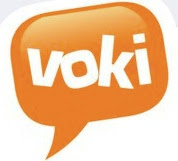Today's post isn't about a web service or tool, it's about how to manage the overload that eventually ensues. I have signed up for many sites and services that I ended up not using in class. Sometimes it's as simple as the fact that the service ended up not being as free as advertised, other times I just can't make it fit a lesson, and the final (and most used) reason that I don't use some things I sign up for is I forget that I signed up for them.
I've found that it's much more useful in elementary school to not just throw a different internet based web 2.0 tool at students each day. They need time to master what's been given to them. If I'm going to teach my students how to Prezi, I'm going to give them time to learn, and I'm going to come back to it multiple times. Don't have students start a blog, then use it twice and never go back (I've done that too). In my daily internet browsing, I've come across some tools that are amazing, and immediately signed up. There's no harm in signing up and bookmarking the pages you come across. Sometimes they fit the classroom, and other times they don't.
You have to give yourself permission to still be a traditional teacher. Don't get so caught up in the technology that you go to it all the time, especially if you're not ready for that. I've been a big user of technology in the classroom since day 1, but I still teach at the whiteboard, or from books, and worksheets, when I feel it's appropriate. Trust your instincts, it's ok. Remember, kids these days aren't impressed if you use a lot of computer based technology, it's just part of daily life for them. Yes, they'll love getting to learn in new and exciting ways, but too much of it can over saturate the classroom and you'll start losing control of their learning.
My biggest recommendation is to have a balance. Find a few tools that truly work for you, and go from there. For me, it looks like this:
- During the first week of school, I get each student set up on their own blog. I use kidblog.org for this. What I like about kidblog is the total control the teacher has. You can control content, commenting, and networking all within the classroom. It's secure, and comes with 500 mb of classroom space. I spend the first days giving tutorials on how to set up the blogs and customize them. I show students how to hotlink pictures and other things they wish to post (this saves tons of space, last year, by hotlinking, by the end of the year each of my 25 students had about 20 posts (over 500 total posts) and we only used 48 mb of our storage space). I'll be posting some kidblog tutorials on my blog soon to get ready for the upcoming year.
- Next, it's time for students to learn a few web tools and how to use them, embed them into blog posts, and log in if needed. It's important to me that I revisit these tools for assignments throughout the year. Students notice if you use something twice then forget about it after you told them you wouldn't. Here are the tools that I will be introducing at the beginning of the year:
- Prezi: In computer lab, the students at my school have been taught PowerPoint since they were in kindergarten. This is great, because PowerPoint is a great presentation tool, it's interactive, customizable, and is something kids take pride in making. By the upper grades, kids can grow a little tired of it, and frankly, I'm sick of looking at PowerPoints. In comes Prezi, a fantastic web based presentation tool that I have previously posted about in a post titled Prezi for Presentations: Goodbye PowerPoint! Prezi lets educators who can verify their school email address have a free educator account, but even the basic account would be sufficient for homeschooling parents. My Prezi account is set up so that my students may log in to my account and create their work there. The advantage of this is that it saves under my profile so I can view it later. Prezi comes with the option to embed as well. I'll go through a tutorial on how to make a Prezi, then have the class practice on their own.
- Voki: I always introduce Voki early on in the school year. If you're unfamiliar with Voki, check out my post titled Make a Voki. Voki is great in that a single "voki" can be made without an account, and can be embedded into the students blog. They love making these fun little interactive baseball cards as I call them.
- PicMonkey: PicMonkey is a great tool for organizing and showing images. I did a post about this tool titled PicMonkey: Awesome Image Collage Tool. There is no account required to use the service, and the images you construct there are savable as jpegs, so you can take the images with you without embedding them. I use this tool all year, so I like to teach it from the start.
- Now that students have some tools under their belt, they can practice getting more content into their blogs, commenting, etc. From there, I can grow my list of resources, and teach them more. But it is important that they have time to mess around with a new tool, to practice and master each one at their own pace. It takes time, so be patient with them, and yourself.



No comments:
Post a Comment
All comments on this blog will be moderated, please stay on topic and refrain from using profanity. Spam will simply be ignored.